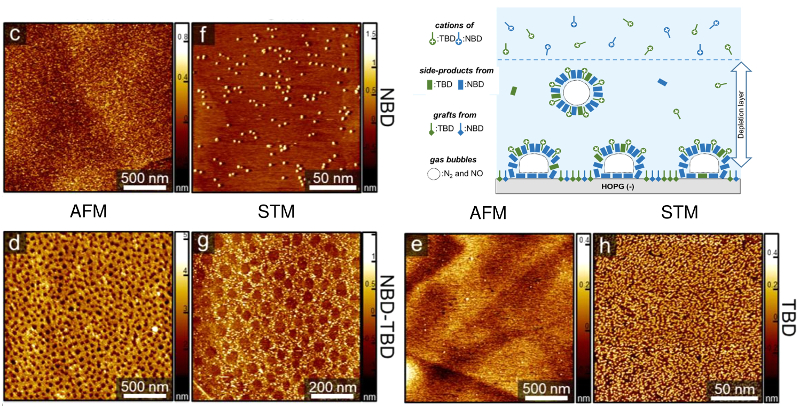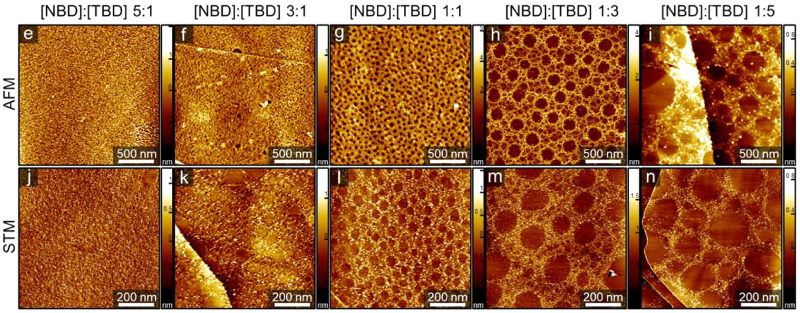AFM Systems
AFM Accessories
Learning
Contact Us
 Part of the Oxford Instruments Group
Part of the Oxford Instruments Group
Researchers demonstrated an approach for covalent functionalization and controlled nanopatterning of graphene and highly oriented pyrolytic graphite (HOPG) surfaces. Nanoscale characterization showed that the electrochemical process created nanoconfined spaces with tunable dimensions.

The ability to create surfaces with nanopatterned structures would enable the continued miniaturization of electronics and benefit diverse nanotechnology applications as well. A variety of bottom-up techniques, which ‘grow’ structures from individual molecules, have been developed to nanopattern graphene and HOPG substrates. However, such structures are typically of limited stability due to noncovalent bonding.
A team of Belgian, Vietnamese, and British researchers demonstrated an approach for controlled nanopatterning using covalent functionalization. Graphitic surfaces were exposed to supporting electrolyte containing the aryl diazonium salts NBD (4-nitrobenzenediazonium) and TBD (3,5-bis-tert-butylbenzenediazonium). Grafting was then performed in an electrochemical cell using cyclic voltammetry and chronoamperometry protocols.
AFM and scanning tunneling microscopy (STM) images revealed nearly circular spots of exposed graphene or HOPG in the modified surfaces. The structures, dubbed nanocorrals, were thought to arise from near-surface bubbles created during the process. AFM images also showed that the nanocorral diameter (~45–130 nm) and density (~20−125/μm2) could be tuned by varying the electrochemical activation conditions and electrolyte ratios, respectively.
The method represents a convenient strategy for creating tunable templates that might serve as tiny Petri dishes for nanoconfined reactions. In this way, the results could facilitate research on supramolecular self-assembly and other on-surface reactions.

AFM images of nanoscale morphology for samples prepared with a cyclic voltammetry protocol were acquired in tapping mode on a Cypher ES AFM. Its capabilities for precise temperature control ensured a constant temperature of 32 °C throughout the experiments. In addition to superb environmental control, the Cypher ES offers fast scanning, simple operation, and spatial resolution routinely higher than other AFMs.
Citation: Thanh Phan, Hans Van Gorp, Zhi Li et al., Graphite and graphene fairy circles: a bottom-up approach for the formation of nanocorrals. ACS Nano 13, 5559 (2019). https://doi.org/10.1021/acsnano.9b00439
Note: The data shown here are reused under fair use from the original article, which can be accessed through the article link above.
